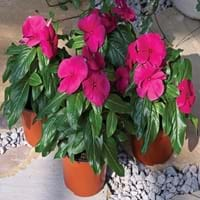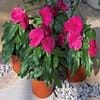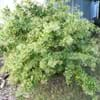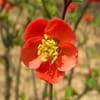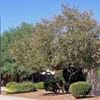Life Span
Annual
Perennial
Type
Tender Perennial
Bulb or Corm or Tuber
Origin
Hybrid origin, Madagascar
Hybrid origin
Types
not available
boissieri , cupanii , hungaricum , kesselringii
Number of Varieties
Not Available
Habitat
subtropical regions, Tropical areas
Temperate Regions
USDA Hardiness Zone
9-15
Not Available
AHS Heat Zone
12-1
Not Available
Sunset Zone
A1, A2, A3, H1, H2, 1a, 1b, 2a, 2b, 3a, 3b, 4, 5, 6, 7, 8, 9, 10, 11, 12, 13, 14, 15, 16, 17, 18, 19, 20, 21, 22, 23, 24
21,22
Habit
Oval or Rounded
Clump-Forming
Flower Color
Red, Pink, Peach
Purple, Violet
Flower Color Modifier
Bicolor
Bicolor
Fruit Color
Not Available
Not Available
Leaf Color in Spring
Dark Green
Green
Leaf Color in Summer
Dark Green
Light Green
Leaf Color in Fall
Dark Green
Several shades of Green
Leaf Color in Winter
Dark Green
Light Green
Leaf Shape
Elliptic and Ovate
Long Linear
Plant Season
Spring, Summer, Fall, Winter
Spring, Fall
Sunlight
Full Sun, Partial Sun
Full Sun, Partial Sun
Type of Soil
Clay, Loam, Sand
Loam
The pH of Soil
Neutral, Alkaline
Acidic, Neutral
Soil Drainage
Well drained
Well drained
Bloom Time
Indeterminate
Late Summer, Early Fall
Tolerances
Pollution, Drought, Salt
Drought
Where to Plant?
Ground, Pot
Ground
How to Plant?
Cuttings, Seedlings
Divison, From bulbs, Seedlings
Plant Maintenance
Medium
Medium
Watering Requirements
Do not water excessively, Needs less watering, Needs small amount of water
Keep ground moist
In Summer
Lots of watering
Lots of watering
In Spring
Moderate
Moderate
In Winter
Average Water
Average Water
Soil pH
Neutral, Alkaline
Acidic, Neutral
Soil Type
Clay, Loam, Sand
Loam
Soil Drainage Capacity
Well drained
Well drained
Sun Exposure
Full Sun, Partial Sun
Full Sun, Partial Sun
Pruning
Remove damaged leaves, Remove dead branches, Remove dead leaves
no pruning required
Fertilizers
All-Purpose Liquid Fertilizer
All-Purpose Liquid Fertilizer
Pests and Diseases
aster yellow, Leaf spot, Red blotch, Root rot, Slugs, Snails, Stem rot
Dry root rot, Pest Free
Plant Tolerance
Drought, Pollution, Salt
Drought
Flower Petal Number
Single
Single
Foliage Texture
Medium
Coarse
Foliage Sheen
Glossy
Glossy
Attracts
Butterflies
Whiteflies
Allergy
Toxic if not prepared properly
Poisonous to grazing animals
Aesthetic Uses
Beautification, Borders, Decorating walls, Ground Cover, Hanging Basket, Used for decorating walls, fences, gates, hedges, etc.
along a porch, deck or patio, Borders, Mixed Border, small hedge
Beauty Benefits
Not Available
No Beauty Benefits
Edible Uses
Sometimes
None
Environmental Uses
Air purification, Food for animals, Food for birds
Air purification
Medicinal Uses
Cancer, Diabetes, Hodgkin's lymphoma., Leukemia, Sore throat
anti rheumatic, cathartic
Part of Plant Used
Flowering Tips, Leaves, stalk
Root
Other Uses
Decoration Purposes, Showy Purposes, Traditional medicine, Use in Chinese herbology
Showy Purposes
Used As Indoor Plant
Sometimes
No
Used As Outdoor Plant
Yes
Yes
Garden Design
Bedding Plant, Container, Hanging Basket, Mixed Border, Tropical
Container, Cutflower, Foundation, Lawns and Turf, Mixed Border
Botanical Name
CATHARANTHUS roseus
COLCHICUM 'Lilac Wonder'
Common Name
Cooler Apricot Vinca, Madagascar Periwinkle, Vinca
Hybrid Autumn Crocus, Hybrid Meadow Saffron
In Hindi
Vinca
meadow saffron
In German
Rosafarbene Catharanthe
Herbstzeitlose
In French
Pervenche de Madagascar
Colchique d'automne
In Spanish
Catharanthus roseus
Estado de conservación
In Greek
Catharanthus roseus
meadow saffron
In Portuguese
Catharanthus roseus
Colchicum autumnale
In Polish
Katarantus różowy
Colchicum autumnale
In Latin
Catharanthus roseus
autumnale
Phylum
Tracheophyta
Tracheophyta
Class
Magnoliopsida
Magnoliopsida
Order
Gentianales
Liliales
Family
Apocynaceae
Liliaceae
Genus
Catharanthus
Colchicum
Clade
Angiosperms, Asterids, Eudicots
Angiosperms, Monocots
Tribe
Vicieae
Not Available
Subfamily
Rauvolfioideae
Not Available
Number of Species
Not Available
Season and Care of Madagascar Periwinkle and Meadow Saffron
Season and care of Madagascar Periwinkle and Meadow Saffron is important to know. While considering everything about Madagascar Periwinkle and Meadow Saffron Care, growing season is an essential factor. Madagascar Periwinkle season is Spring, Summer, Fall and Winter and Meadow Saffron season is Spring, Summer, Fall and Winter. The type of soil for Madagascar Periwinkle is Clay, Loam, Sand and for Meadow Saffron is Loam while the PH of soil for Madagascar Periwinkle is Neutral, Alkaline and for Meadow Saffron is Acidic, Neutral.
Madagascar Periwinkle and Meadow Saffron Physical Information
Madagascar Periwinkle and Meadow Saffron physical information is very important for comparison. Madagascar Periwinkle height is 25.40 cm and width 15.20 cm whereas Meadow Saffron height is 12.70 cm and width 20.30 cm. The color specification of Madagascar Periwinkle and Meadow Saffron are as follows:
Madagascar Periwinkle flower color: Red, Pink and Peach
Madagascar Periwinkle leaf color: Dark Green
Meadow Saffron flower color: Purple and Violet
- Meadow Saffron leaf color: Green
Care of Madagascar Periwinkle and Meadow Saffron
Care of Madagascar Periwinkle and Meadow Saffron include pruning, fertilizers, watering etc. Madagascar Periwinkle pruning is done Remove damaged leaves, Remove dead branches and Remove dead leaves and Meadow Saffron pruning is done no pruning required. In summer Madagascar Periwinkle needs Lots of watering and in winter, it needs Average Water. Whereas, in summer Meadow Saffron needs Lots of watering and in winter, it needs Average Water.
